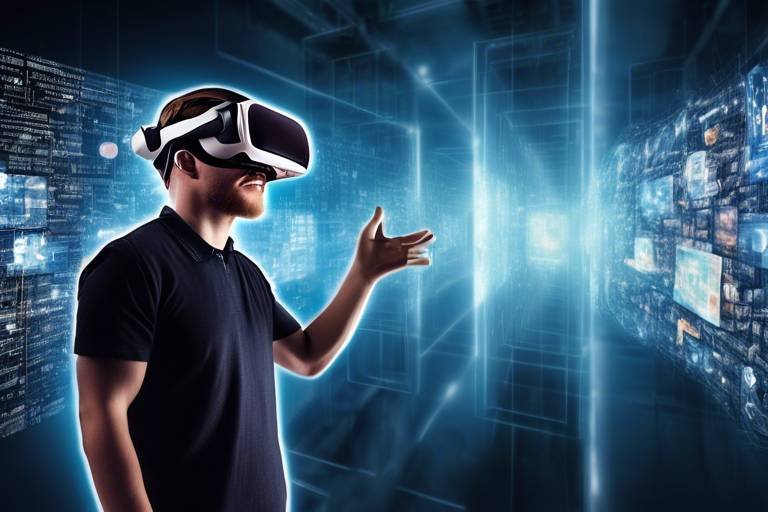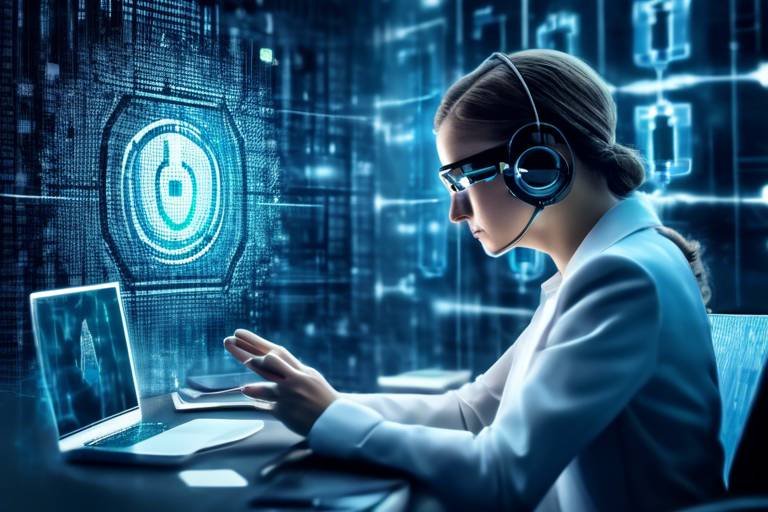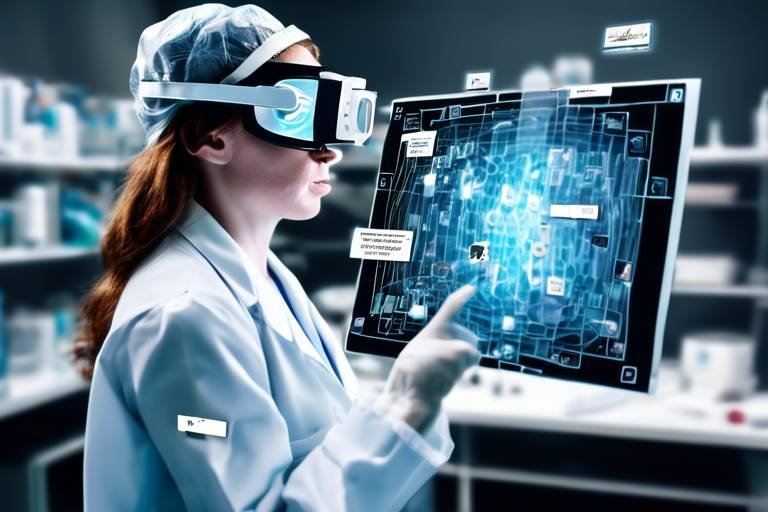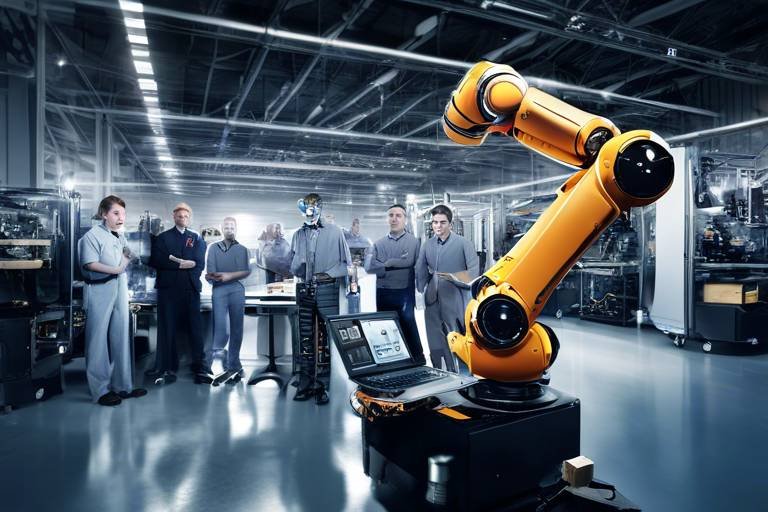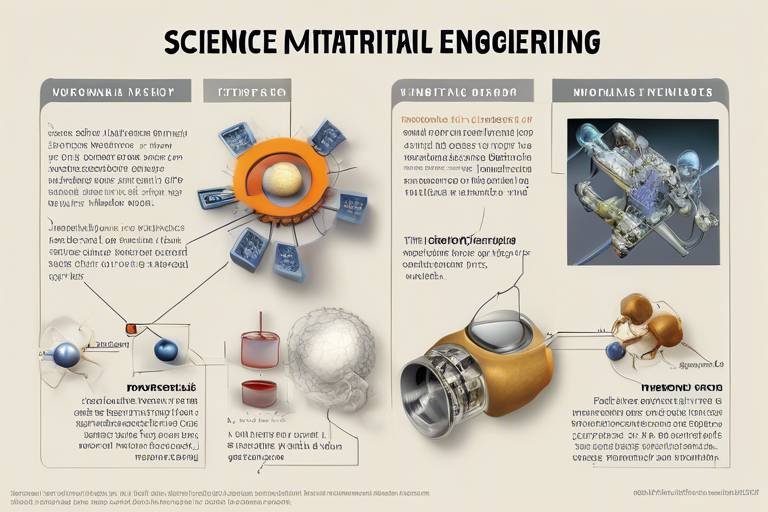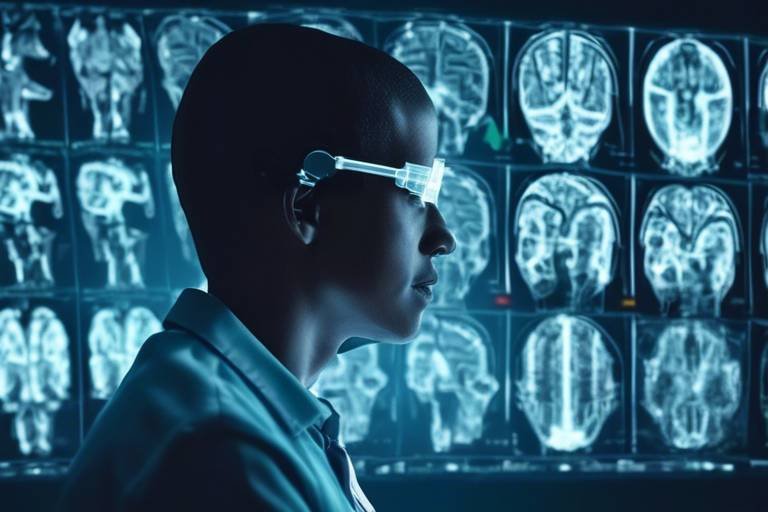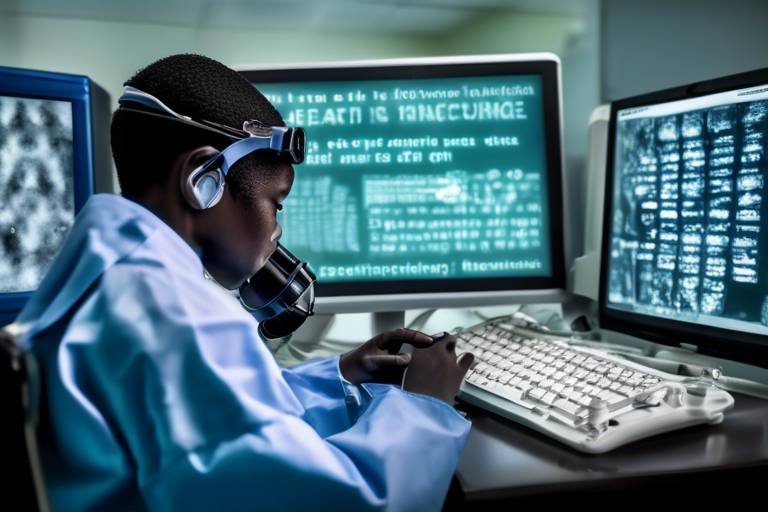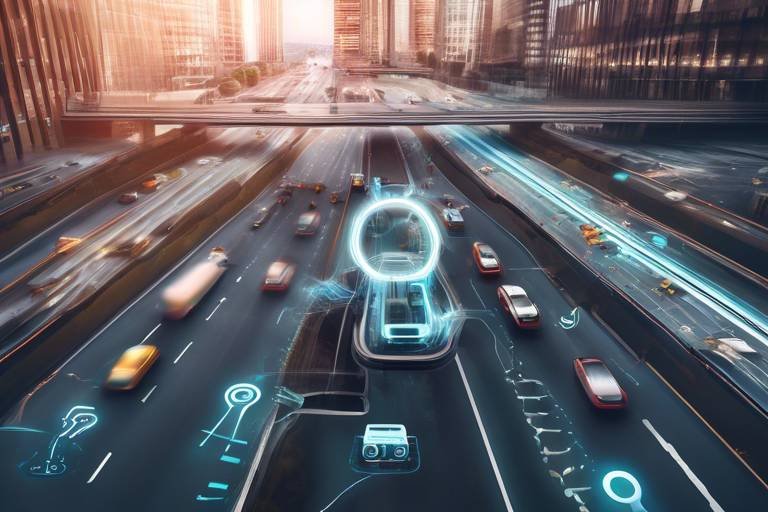Exploring the Science of Virtual Reality Technology
Virtual reality (VR) is not just a buzzword; it's a captivating technology that transports users into entirely different realms. Imagine slipping on a headset and suddenly finding yourself on a vibrant alien planet or in a bustling medieval marketplace. This immersive experience is made possible by the intricate dance of hardware and software working in harmony. At its core, VR creates a simulated environment that can be similar to or completely different from the real world. But what exactly makes this technology tick? Understanding the fundamental principles behind virtual reality is crucial for appreciating its vast applications and its potential to reshape our experiences.
The science of VR hinges on a few key components: sensory immersion, interactivity, and the ability to trick the brain into believing in the virtual world. When you put on a VR headset, your eyes are presented with two slightly different images, mimicking how our eyes perceive depth and distance. This stereoscopic view, combined with head tracking technology, allows you to look around your virtual environment as if you were physically there. Additionally, haptic feedback devices can enhance this experience by simulating touch, making virtual interactions feel more real.
But VR isn't just about flashy graphics and cool gadgets; it's about creating experiences that can alter perceptions and behaviors. For instance, in gaming, players can step into the shoes of their characters, experiencing not just the thrill of the game but also the emotional weight of their decisions. In education, students can explore historical events or complex scientific concepts in a way that traditional textbooks simply can't match. The potential of VR extends far beyond entertainment, making it a revolutionary tool in various fields.
As we delve deeper into the applications of virtual reality, we'll uncover how it's reshaping industries like gaming, education, and healthcare. Each of these fields is leveraging VR's unique capabilities to enhance engagement, improve learning outcomes, and even transform treatment methodologies. The possibilities are endless, and the future of virtual reality is bright, promising to create experiences that blend the lines between reality and the virtual world.
Understanding the basic principles of virtual reality, including how it creates immersive experiences through hardware and software, is crucial for appreciating its applications and potential.
Virtual reality has revolutionized the gaming industry by providing players with immersive environments and interactive experiences, enhancing engagement and enjoyment.
Exploring how VR technology transforms traditional gameplay mechanics, allowing for more interactive and realistic experiences that keep players engaged longer.
Examining the role of social interaction in virtual reality gaming, where players can connect and collaborate in shared virtual spaces, enhancing the overall experience.
Discussing emerging trends in VR gaming, including advancements in technology and gameplay design that promise to redefine the gaming landscape.
Analyzing how virtual reality influences game development processes, from design to testing, and the challenges developers face in creating compelling VR experiences.
Virtual reality is increasingly being utilized in education, providing unique learning experiences that enhance understanding and retention of complex subjects.
Exploring the concept of virtual classrooms, where students can engage in immersive learning experiences that transcend traditional educational boundaries.
Discussing the effectiveness of VR in training simulations across various fields, including medicine and aviation, where realistic practice environments are crucial for skill development.
Virtual reality technology is making significant strides in healthcare, offering innovative solutions for treatment, therapy, and medical training.
Examining how VR is used in therapeutic settings to treat conditions such as PTSD, anxiety, and phobias, providing patients with controlled environments for exposure therapy.
Highlighting the role of virtual reality in medical training, allowing practitioners to practice surgical procedures and patient interactions in a safe, simulated environment.
- What is virtual reality? Virtual reality is a simulated experience that can be similar to or completely different from the real world, often achieved through the use of VR headsets and other sensory devices.
- How does VR technology work? VR technology uses a combination of hardware like headsets and software to create immersive environments that engage the user's senses.
- What are the main applications of VR? VR is used in various fields, including gaming, education, healthcare, and training simulations, offering unique interactive experiences.
- Is VR safe to use? While VR is generally safe, some individuals may experience discomfort or motion sickness, especially during prolonged use.
- What is the future of virtual reality? The future of VR is promising, with advancements in technology expected to enhance realism, interactivity, and accessibility across various sectors.
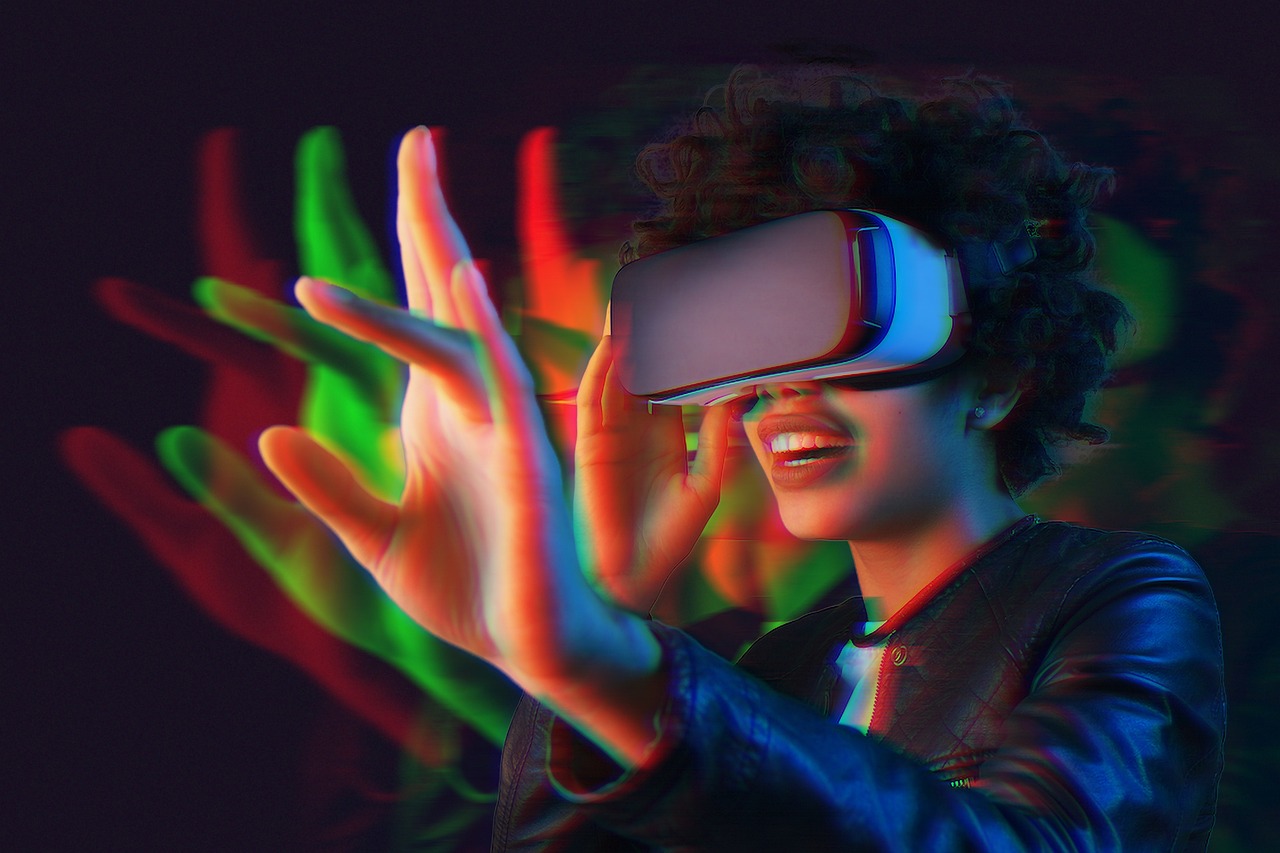
The Fundamentals of Virtual Reality
Understanding the basic principles of virtual reality (VR) is essential for anyone interested in the technology that is reshaping our digital experiences. At its core, VR is about creating a simulated environment that can be similar to or completely different from the real world. This immersive experience is achieved through a combination of advanced hardware and software that work together to transport users into a three-dimensional space where they can interact with the environment in real-time.
The hardware component typically includes head-mounted displays (HMDs), motion sensors, and sometimes handheld controllers. HMDs like the Oculus Rift or HTC Vive are equipped with high-resolution screens and sensors that track the user's head movements, allowing the virtual environment to adjust accordingly. This technology creates a sense of presence, making users feel as though they are truly inside the virtual world. On the software side, VR relies on complex algorithms and 3D modeling to create realistic graphics and physics that mimic real-life interactions.
One of the most fascinating aspects of VR is its ability to trick the brain into believing it is experiencing something real. This phenomenon is often referred to as immersion. The more immersive a VR experience is, the more engaged users become. This engagement is not just about visuals; it also involves sound and tactile feedback. For instance, spatial audio can enhance the realism by making sounds appear to come from specific directions, while haptic feedback from controllers can simulate the feeling of touching or manipulating objects within the virtual environment.
The applications of VR span across various fields, demonstrating its versatility. In gaming, for example, players can step into the shoes of their favorite characters, experiencing the game world as if they were truly part of it. In education, VR can transport students to historical sites or distant planets, making learning more engaging and memorable. Moreover, the healthcare sector is leveraging VR for training medical professionals and treating patients, showcasing its potential to revolutionize traditional practices.
To further illustrate the fundamental components of virtual reality, consider the following table that outlines the key elements and their functions:
| Component | Function |
|---|---|
| Head-Mounted Display (HMD) | Provides a visual interface, immersing users in the virtual environment. |
| Motion Sensors | Tracks head and body movements to adjust the virtual perspective accordingly. |
| Controllers | Enables interaction with the virtual environment, allowing users to manipulate objects. |
| Software | Generates the virtual environment and governs the interactions within it. |
In conclusion, the fundamentals of virtual reality encompass a blend of technology and creativity, allowing us to explore new realms of possibility. As we continue to refine these tools and techniques, the potential for VR to change how we learn, play, and heal becomes more apparent. Whether you’re a gamer seeking the latest immersive experience or an educator looking to enhance your teaching methods, understanding these fundamentals is the first step toward embracing the future of virtual reality.

Applications in Gaming
Virtual reality (VR) has taken the gaming industry by storm, creating a vibrant tapestry of immersive experiences that redefine how we interact with digital worlds. Imagine stepping into a realm where the boundaries between reality and fantasy blur, where you can physically move, interact, and feel as if you are truly part of the game. This is not just a dream; it’s the new frontier of gaming brought to life by VR technology. Players are no longer mere spectators; they are active participants in a universe where every action has a tangible consequence.
One of the most exciting aspects of VR in gaming is the immersive gameplay mechanics it offers. Traditional games often confine players to a screen, but VR breaks those chains, allowing players to explore vast landscapes and engage in epic battles as if they were right there in the thick of it. With the help of motion controllers, players can swing swords, throw spells, or even build structures with their own hands. This level of interaction not only enhances the fun but also keeps players engaged for longer periods. Think of it as stepping into a movie where you control the plot, rather than just watching it unfold.
Let’s dive deeper into how VR transforms traditional gameplay mechanics. In conventional gaming, the experience is often limited by the two-dimensional screen and the controller in hand. However, with VR, the entire room becomes your playground. Players can duck behind cover, reach out to grab items, and even perform complex maneuvers that would be impossible in a flat environment. This transformation is akin to moving from a black-and-white film to a 3D blockbuster; the depth and realism are simply unparalleled.
Another fascinating aspect of VR gaming is the emphasis on social interaction. Imagine being able to hang out with friends in a virtual bar, explore fantastical worlds together, or engage in competitive matches, all while feeling as if you are physically present with one another. This social component enhances the overall gaming experience, making it more than just a solitary activity. Players can collaborate in shared virtual spaces, strategizing together in real-time, which fosters a sense of community that is often lacking in traditional online gaming.
As we look ahead, the future of VR gaming is bursting with potential. Emerging trends suggest that we will see even more sophisticated technology, such as haptic feedback suits that allow players to feel sensations like wind or impacts, further immersing them in their virtual surroundings. Additionally, advancements in AI will lead to more realistic NPCs (non-playable characters) that can interact with players in meaningful ways. The gaming landscape is on the verge of a major evolution, where players can expect not just to play a game, but to live it.
The influence of virtual reality extends beyond just gameplay; it significantly impacts the game development process. Developers now face the challenge of creating compelling VR experiences that are not only engaging but also accessible. This involves rethinking traditional design elements and testing methods. VR games require a unique approach to storytelling, level design, and user interface, as developers must consider how players will physically interact with the game world. The process is akin to crafting a new language—one that players must learn to navigate and enjoy.
In conclusion, the applications of virtual reality in gaming are vast and varied, creating experiences that are not only entertaining but also revolutionary. As technology continues to advance, we can only imagine the incredible possibilities that lie ahead. Are you ready to step into the future of gaming?
- What is virtual reality gaming? Virtual reality gaming is an immersive experience that allows players to interact with a computer-generated environment using VR headsets and motion controllers.
- How does VR enhance gameplay? VR enhances gameplay by providing a 360-degree view of the game world, allowing for physical interaction and a more immersive experience.
- What are some popular VR games? Some popular VR games include Beat Saber, Half-Life: Alyx, and VRChat, each offering unique experiences.
- Is VR gaming suitable for everyone? While VR gaming can be enjoyed by many, some individuals may experience motion sickness or discomfort, so it’s important to take breaks and adjust settings as needed.

Immersive Gameplay Mechanics
When it comes to , virtual reality (VR) technology has truly changed the game—literally! Imagine stepping into a world where you can swing a sword, drive a car, or even fly a spaceship, all while feeling as if you’re really there. This sense of presence is not just a gimmick; it’s a fundamental shift in how we experience gaming. VR utilizes advanced hardware like headsets and motion sensors to create a 360-degree environment that responds to your every move. It’s like being transported to another universe where the rules of reality bend to accommodate your imagination.
The mechanics of gameplay in VR are designed to engage players on a deeper level. For instance, traditional gaming often relies on buttons and joysticks, but in VR, your body becomes the controller. You can physically reach out to grab objects, duck to avoid obstacles, or even turn your head to explore your surroundings. This level of interactivity is not just about fun; it enhances cognitive engagement and emotional investment in the game. Players are more likely to remember experiences in VR because they are actively participating rather than passively observing.
Moreover, the evolution of gameplay mechanics in VR has led to the development of innovative genres. For example, first-person shooters have taken on a whole new dimension. Instead of merely aiming with a controller, players can physically aim and shoot, providing a more realistic and thrilling experience. Similarly, puzzle games have become more challenging and engaging as players must manipulate objects in a three-dimensional space, often requiring them to think creatively to solve problems.
To better understand how these immersive mechanics work, let’s break down some key elements:
- Physical Interaction: Players can reach out and touch virtual objects, making gameplay feel more tangible.
- Spatial Awareness: Players must navigate their surroundings, which adds a layer of strategy and realism.
- Feedback Systems: Haptic feedback devices enhance realism by providing physical sensations that correspond to in-game actions.
As we look to the future, it’s exciting to think about how these immersive gameplay mechanics will continue to evolve. With advancements in technology, we can expect even more refined interactions, such as eye-tracking systems that allow players to control aspects of the game just by looking at them. This could open up entirely new gameplay possibilities and redefine what it means to be a player in a virtual world.
In conclusion, the immersive gameplay mechanics of VR are not just a passing trend; they represent a significant evolution in how we engage with games. By breaking down barriers between the player and the game world, VR creates experiences that are not only entertaining but also deeply impactful. So, whether you’re slashing through enemies or solving intricate puzzles, the immersive nature of VR is here to stay, transforming the gaming landscape one experience at a time.
- What is the main advantage of immersive gameplay mechanics in VR?
Immersive gameplay mechanics enhance player engagement and emotional investment, making experiences more memorable. - How does VR change traditional gaming controls?
In VR, players use their bodies as controllers, allowing for more natural and intuitive interactions compared to traditional button-based controls. - What future technologies could enhance immersive gameplay?
Technologies like eye-tracking and advanced haptic feedback are expected to further enhance the immersive experience in VR.

Social Interaction in VR Games
When it comes to virtual reality (VR) gaming, one of the most exciting aspects is the social interaction it fosters. Gone are the days when gaming was a solitary endeavor, confined to the four walls of your room. Now, players can step into vibrant, shared virtual worlds where they can meet, chat, and collaborate with others from around the globe. Imagine donning a VR headset and finding yourself in a bustling digital marketplace, surrounded by avatars of players just like you, each with their own unique personalities and styles. It's like stepping into a new reality where the boundaries of geography dissolve and friendships can blossom in the most unexpected ways.
In VR games, social interaction isn't just an added bonus; it's a core feature that enhances the overall experience. Players can engage in various activities together, whether it's teaming up to conquer a challenging quest, participating in virtual events, or simply hanging out in a virtual space. This level of engagement creates a sense of community that traditional gaming often lacks. For instance, in games like Rec Room and VRChat, players can create their own rooms, host events, and even build games within the game, all while interacting with others in real-time. It's a new frontier for socializing that feels both immersive and genuine.
Moreover, the social dynamics in VR games can lead to unique experiences that transcend typical online gaming interactions. In these environments, players can use body language, gestures, and even voice modulation to express themselves, making interactions feel more personal and authentic. This is further enhanced by the ability to create customizable avatars that reflect one's identity, allowing players to explore different facets of themselves in a safe and engaging space. For example, a shy individual might find it easier to connect with others when they can adopt a more outgoing avatar, breaking down social barriers that exist in the real world.
However, social interaction in VR also comes with its challenges. Players may encounter issues such as toxicity or harassment, which can detract from the immersive experience. Developers are continually working on tools and features to combat these issues, such as moderation systems and safe spaces for players to retreat to if they feel uncomfortable. It's a delicate balance between fostering an open community and ensuring that all players feel safe and respected while interacting in these digital realms.
As we look to the future, the potential for social interaction in VR games seems boundless. With advancements in technology, we can expect even more realistic interactions, perhaps incorporating haptic feedback devices that allow players to 'feel' the presence of others. Imagine shaking hands with a fellow player or high-fiving them after a successful mission! This evolution will undoubtedly redefine how we connect and interact in virtual spaces, making it an exhilarating time for gamers and socialites alike.
- What is social interaction in VR games? Social interaction in VR games refers to the ability for players to connect, communicate, and collaborate with others in virtual environments, enhancing the gaming experience.
- How does VR enhance social interactions compared to traditional gaming? VR provides a more immersive experience, allowing players to use body language, gestures, and customizable avatars, making interactions feel more personal and engaging.
- What challenges do players face in social VR environments? Players may encounter issues like toxicity or harassment, which developers are actively working to mitigate through various tools and features.
- What is the future of social interaction in VR gaming? The future looks bright with advancements in technology that may lead to even more realistic interactions, such as haptic feedback, making social experiences in VR more lifelike.

Future Trends in VR Gaming
As we look ahead, the world of virtual reality gaming is poised for some incredible transformations. Imagine stepping into a game where the boundaries between reality and the virtual world blur even further. Exciting, right? One of the most notable trends is the integration of artificial intelligence (AI) within VR environments. AI can create dynamic and responsive game worlds that adapt to players' actions, making every playthrough unique. This means that no two gaming experiences will ever be the same, keeping players on their toes and deeply engaged.
Another trend to watch is the advancement of haptic feedback technology. You might be familiar with rumbling controllers, but the future holds more sophisticated systems that can simulate touch and texture. Imagine feeling the weight of a sword in your hand or the sensation of wind while racing through a virtual landscape. This level of immersion will elevate the gaming experience, making it more realistic and thrilling.
Moreover, cross-platform play is becoming increasingly popular, enabling players to connect regardless of their gaming device. This means you could engage in a VR battle with friends on different platforms, whether they're using a console, PC, or even mobile devices. The idea of a united gaming community is not just a dream anymore; it’s becoming a reality.
Additionally, the rise of social VR experiences is noteworthy. Games are evolving into social platforms where players can meet, interact, and collaborate in shared virtual spaces. Picture this: you and your friends gather in a virtual café, discussing strategies for your next gaming session or simply enjoying each other’s company. This social aspect will redefine how we perceive gaming, transforming it from a solitary activity into a vibrant community experience.
Lastly, let’s not forget about the potential for augmented reality (AR) to blend with VR. The fusion of these technologies could lead to groundbreaking gameplay mechanics that allow players to interact with both real and virtual elements simultaneously. For instance, imagine a game where you can see virtual creatures in your living room, interacting with your physical environment. The possibilities are endless, and this integration could revolutionize the way we engage with games.
In summary, the future of VR gaming is bright and full of potential. With advancements in AI, haptic technology, cross-platform play, social experiences, and the merging of AR and VR, players can expect a more immersive, interactive, and engaging gaming landscape. The question is, are you ready to step into this new reality?
- What is virtual reality gaming? - Virtual reality gaming involves using technology to create immersive environments that players can interact with, often using headsets and motion controllers.
- How does haptic feedback enhance VR gaming? - Haptic feedback provides physical sensations that correspond to in-game actions, making the experience more realistic and engaging.
- Will VR gaming become more social? - Yes, the trend is moving towards creating shared virtual spaces where players can interact, collaborate, and enjoy gaming together.
- What role will AI play in the future of VR gaming? - AI will enable dynamic game worlds that adapt to player actions, creating unique experiences every time you play.
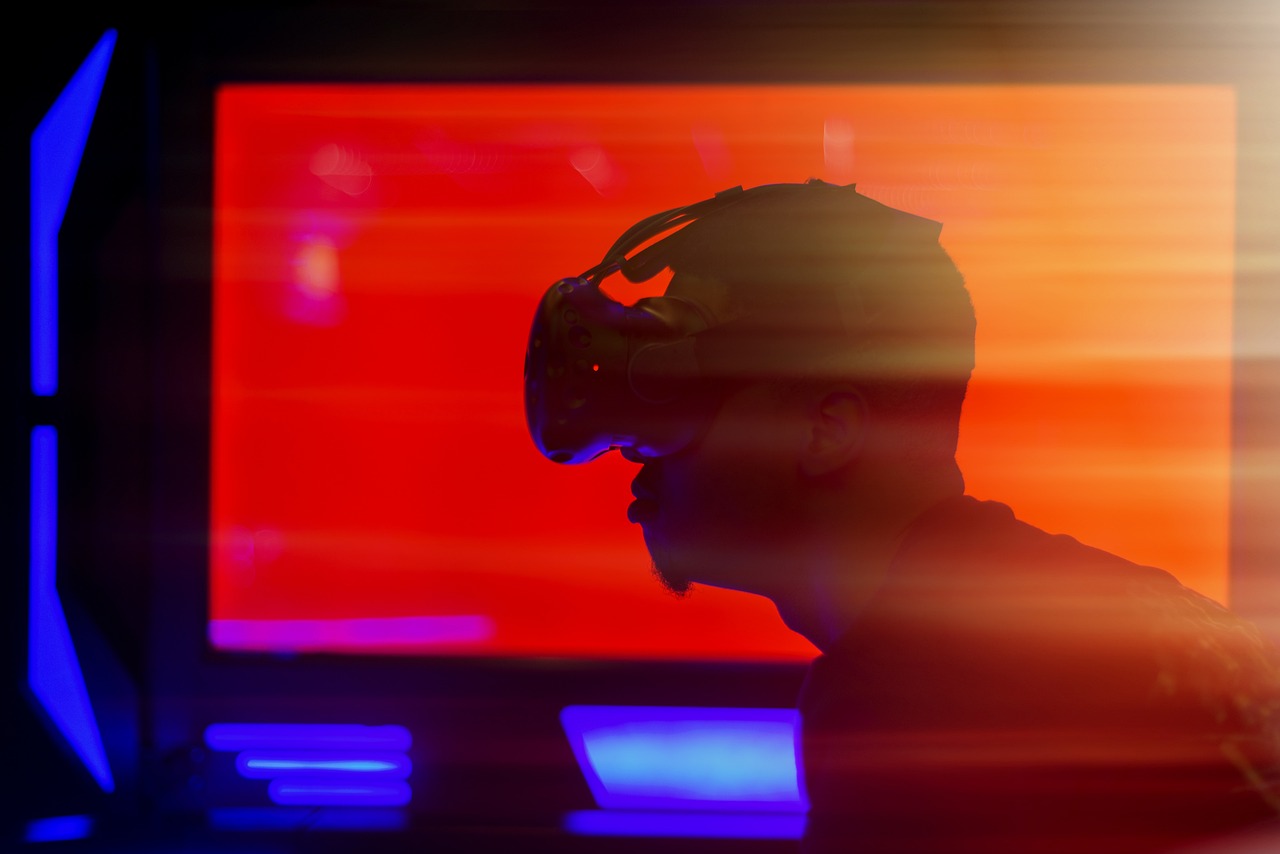
Impact on Game Development
The introduction of virtual reality (VR) technology has not just transformed how players engage with games; it has also significantly impacted the entire game development process. Developers are now faced with the exciting yet challenging task of creating immersive worlds that players can physically interact with. This shift requires a fundamental rethinking of traditional game design principles. Instead of simply focusing on graphics and gameplay mechanics, developers must consider how players will experience their games in a three-dimensional space.
One of the most significant changes in game development is the emphasis on user experience. In VR, the player's perspective is entirely different; they are no longer passive observers but active participants. This necessitates a greater focus on intuitive controls and realistic interactions. Developers must create environments that feel alive, where every action has a reaction, and where players can explore their surroundings in a way that feels natural. This can lead to a more engaging gameplay experience, but it also means that developers need to invest more time and resources into playtesting and refining these interactions.
Moreover, VR technology introduces new challenges in terms of performance optimization. Unlike traditional games, which can often rely on static environments and pre-rendered animations, VR games require real-time rendering of complex 3D environments. This demands powerful hardware and sophisticated software solutions to ensure smooth performance and prevent motion sickness, which can occur if the frame rate drops or if there is a disconnect between the player's movements and what they see in the headset. Developers are thus pushed to innovate not only in gameplay mechanics but also in the underlying technology that powers these experiences.
Another critical aspect of game development impacted by VR is the collaboration process. Creating a VR game often involves a multidisciplinary team, including designers, artists, programmers, and sound engineers, all working closely together. The integration of various elements—visuals, sound, and interactivity—must be seamless to create a truly immersive experience. This collaborative effort can lead to more innovative game concepts, as team members bring diverse perspectives and skills to the table. However, it also requires effective communication and project management to ensure that everyone is on the same page.
In summary, the impact of VR on game development is profound and multifaceted. It challenges developers to rethink their approaches to design and technology while pushing the boundaries of what is possible in gaming. As the technology continues to evolve, we can expect even more exciting developments in how games are created and experienced. The future of game development is not just about making games that look good; it's about creating worlds that players can truly inhabit and interact with in ways that were previously unimaginable.
- What are the main challenges in developing VR games? Developers face challenges such as performance optimization, user experience design, and ensuring comfort to prevent motion sickness.
- How does VR change the player's experience? VR transforms players from passive observers into active participants, allowing for deeper engagement and interaction with the game world.
- What skills are essential for VR game developers? A strong understanding of 3D modeling, user interface design, programming, and sound design are crucial for creating compelling VR experiences.
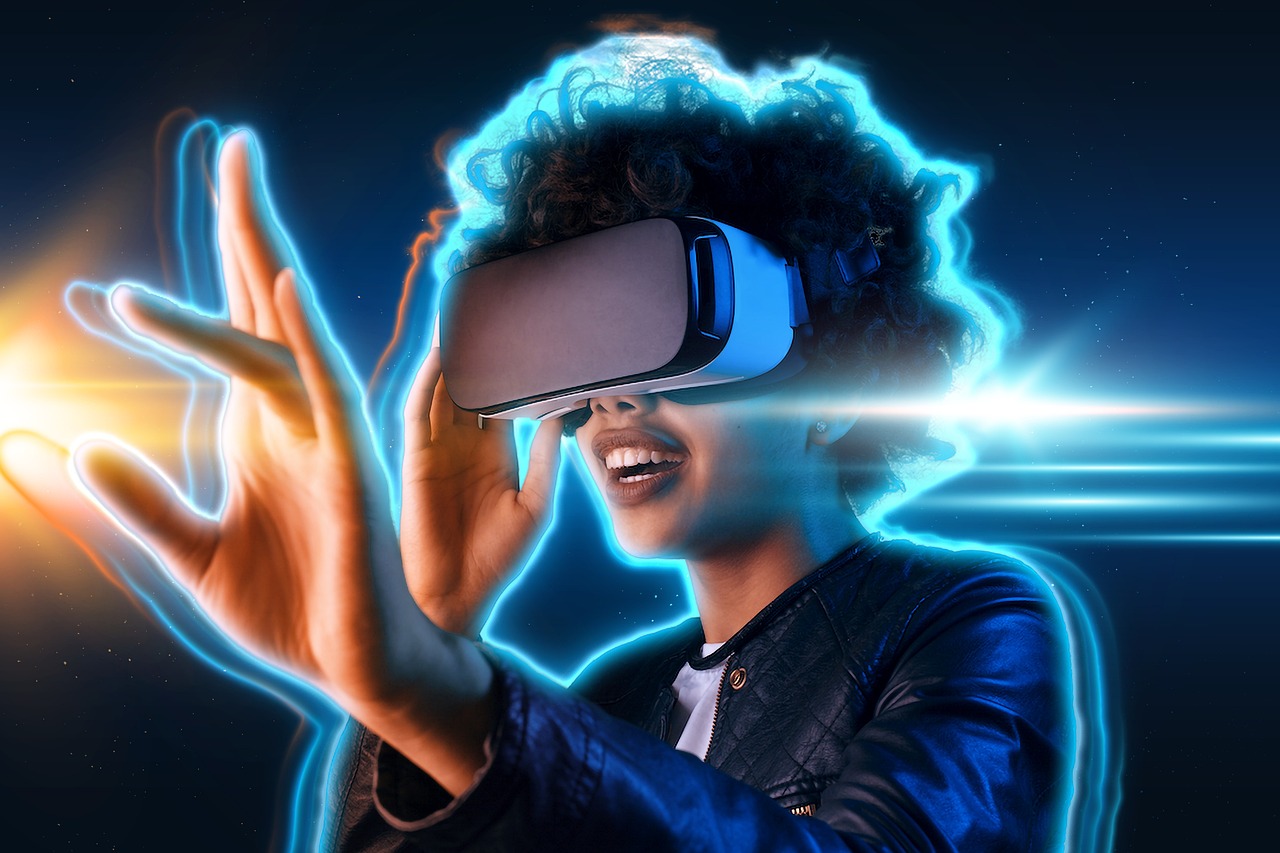
Educational Uses of Virtual Reality
Virtual reality (VR) is rapidly transforming the educational landscape, offering unique opportunities for learners to engage with content in ways that traditional methods simply cannot match. Imagine stepping into a virtual world where complex concepts come to life right before your eyes. This immersive technology breaks down the barriers of conventional learning, allowing students to explore, interact, and experience subjects in a more profound and memorable way. Whether it's diving into the depths of the ocean to study marine biology or walking through ancient civilizations to understand history, VR opens up a realm of possibilities that keeps students excited and engaged.
One of the standout features of VR in education is the concept of virtual classrooms. In these settings, students can participate in lessons from anywhere in the world, all while feeling as if they are in the same room. This not only enhances accessibility for remote learners but also fosters collaboration among students who might never have the chance to meet in person. Imagine a classroom where students from different countries can work together on projects, share ideas, and learn from one another's perspectives. This global interaction enriches the educational experience, making learning more relevant and applicable to real-world situations.
Moreover, VR is proving to be incredibly effective in training simulations. These simulations are particularly crucial in fields such as medicine, aviation, and engineering, where hands-on experience is vital for skill development. For instance, medical students can practice surgical procedures in a risk-free environment, allowing them to make mistakes and learn from them without endangering patients. Similarly, pilots can navigate complex flight scenarios without ever leaving the ground. This type of experiential learning not only boosts confidence but also enhances retention of knowledge, as students can visualize and practice what they learn in a safe and controlled setting.
To illustrate the impact of VR in education, consider the following table that highlights some key benefits:
| Benefit | Description |
|---|---|
| Enhanced Engagement | Students are more likely to participate actively in lessons that utilize immersive technology. |
| Improved Retention | Experiential learning through VR helps students remember information better. |
| Accessibility | VR makes education accessible to students in remote locations or those with disabilities. |
| Safe Learning Environment | Students can practice skills without the fear of real-world consequences. |
As we look to the future, the potential for VR in education seems limitless. With ongoing advancements in technology, we can expect even more innovative applications that will reshape how we think about learning. From fully immersive history lessons to interactive science experiments, the classroom of the future is poised to be a place where imagination and technology collide, creating an exciting environment for learners of all ages.
- What is virtual reality in education? Virtual reality in education refers to the use of immersive technology to create engaging learning experiences that allow students to explore and interact with content in a more meaningful way.
- How does VR enhance learning? VR enhances learning by providing immersive experiences that improve engagement, retention, and understanding of complex subjects through hands-on practice and visualization.
- Is VR accessible for all students? Yes, VR can enhance accessibility for students in remote locations or those with disabilities, providing them with opportunities to participate in learning experiences they might otherwise miss.
- What subjects benefit most from VR? Subjects like science, history, and medicine benefit significantly from VR, as it allows for interactive simulations and immersive explorations that deepen understanding.

Virtual Classrooms
Imagine stepping into a classroom where the walls are not defined by bricks and mortar but by the boundaries of your imagination. are revolutionizing the educational landscape, creating immersive learning environments that transcend the limitations of traditional education. With the integration of virtual reality (VR), students can explore complex subjects in ways that were once thought impossible. Instead of merely reading about ancient civilizations, students can virtually walk through the streets of Rome, interact with historical figures, and witness significant events unfold right before their eyes.
The beauty of virtual classrooms lies in their ability to offer personalized learning experiences. Each student can progress at their own pace, revisiting challenging concepts or exploring advanced topics that pique their interest. This adaptability fosters a sense of ownership over their education, making learning not just a requirement but a thrilling adventure.
Moreover, virtual classrooms break down geographical barriers. Students from different corners of the globe can come together in a shared digital space, collaborating on projects and engaging in discussions that enrich their understanding of diverse perspectives. This global connectivity not only enhances cultural awareness but also prepares students for a world that is increasingly interconnected.
To illustrate the impact of virtual classrooms, consider the following table that highlights key features and benefits:
| Feature | Benefit |
|---|---|
| Immersive Learning Experiences | Enhances understanding and retention of complex subjects. |
| Global Collaboration | Encourages cultural exchange and teamwork among students worldwide. |
| Personalized Learning Paths | Allows students to learn at their own pace, catering to individual needs. |
| Access to Resources | Provides students with access to a wealth of information and virtual tools. |
In addition to these features, virtual classrooms are equipped with tools that facilitate interaction and engagement. Students can participate in live discussions, share presentations, and even conduct experiments in a virtual lab setting. This hands-on approach to learning not only makes education more enjoyable but also helps students develop critical thinking and problem-solving skills.
As we look to the future, the potential of virtual classrooms seems limitless. With advancements in technology, we can expect even more sophisticated tools and resources that will further enhance the educational experience. Imagine virtual reality simulations that allow students to conduct scientific experiments safely or to practice language skills with native speakers in a simulated environment. The possibilities are endless, and the impact on education will undoubtedly be profound.
In conclusion, virtual classrooms represent a significant leap forward in educational methodologies. They offer immersive, engaging, and personalized learning experiences that prepare students for the challenges of the modern world. As we continue to embrace these technological advancements, we can look forward to a future where education is not just a destination, but an exciting journey of discovery.
- What are virtual classrooms? Virtual classrooms are online learning environments that use technology, such as virtual reality, to create immersive educational experiences.
- How do virtual classrooms enhance learning? They provide interactive and engaging experiences that improve understanding and retention of complex subjects.
- Can students collaborate in virtual classrooms? Yes, students can collaborate with peers from around the world, promoting teamwork and cultural exchange.
- What tools are available in virtual classrooms? Tools may include video conferencing, virtual labs, interactive simulations, and more.

Training Simulations
In the ever-evolving landscape of education and professional training, virtual reality (VR) has emerged as a groundbreaking tool, particularly in the realm of training simulations. Imagine stepping into a lifelike environment where you can practice your skills without the fear of real-world consequences. This is exactly what VR offers, creating a safe space for learners to hone their abilities, whether they are aspiring surgeons or pilots. The immersive nature of VR helps to bridge the gap between theoretical knowledge and practical application, making learning not just effective but also engaging.
One of the most compelling aspects of VR training simulations is their ability to replicate real-world scenarios with stunning accuracy. For instance, in the medical field, students can perform complex surgeries in a virtual operating room. They can make mistakes, learn from them, and repeat the process until they feel confident enough to operate on real patients. This hands-on experience is invaluable, as it allows trainees to develop muscle memory and decision-making skills in a controlled environment. The following table highlights some key benefits of using VR in training simulations:
| Benefit | Description |
|---|---|
| Enhanced Engagement | VR simulations captivate learners, keeping them motivated and focused. |
| Safe Learning Environment | Trainees can make mistakes without real-world repercussions, fostering a deeper understanding. |
| Immediate Feedback | Participants receive instant feedback on their performance, allowing for quick adjustments and learning. |
| Accessibility | VR can simulate scenarios that might be difficult to recreate in real life, broadening training opportunities. |
Furthermore, the versatility of VR training simulations extends beyond medicine. Industries such as aviation, manufacturing, and even law enforcement are leveraging this technology to train personnel effectively. For pilots, VR provides a realistic cockpit experience, allowing them to practice navigation and emergency procedures without ever leaving the ground. In manufacturing, workers can train on complex machinery in a virtual setting, ensuring they are well-prepared to operate equipment safely and efficiently.
But what about the learners themselves? How do they perceive these VR training simulations? Most reports indicate that participants find the experience to be not only informative but also enjoyable. The gamification of training—where learners earn points or rewards for completing tasks—adds an element of fun that traditional training methods often lack. This engagement can lead to better retention of information and skills, ultimately resulting in a more competent workforce.
As we look to the future, the potential for VR in training simulations appears limitless. With advancements in technology, we can expect even more realistic and interactive experiences. Imagine a future where virtual reality is a standard part of training across all sectors, where learners can practice and perfect their skills in ways we can only dream of today. The integration of VR into training not only prepares individuals for their careers but also enhances their overall learning experience, making education more effective and enjoyable.
- What industries benefit from VR training simulations? Many industries, including healthcare, aviation, manufacturing, and law enforcement, utilize VR for effective training.
- Is VR training safe? Yes, VR training provides a safe environment for learners to practice skills without real-world risks.
- How does VR enhance learning retention? The immersive and engaging nature of VR helps learners retain information better than traditional methods.
- Can VR be used for remote training? Absolutely! VR can facilitate remote training sessions, allowing learners to participate from anywhere.

Healthcare Innovations
Virtual reality (VR) technology is not just a playground for gamers; it’s making remarkable strides in the healthcare sector, transforming how we approach treatment, therapy, and medical training. Imagine stepping into a world where patients can confront their fears in a safe environment or where medical students can practice complex surgeries without any real-life consequences. This is the power of VR, and it’s revolutionizing the healthcare landscape.
One of the most exciting applications of VR in healthcare is in the realm of therapeutic applications. For instance, patients suffering from conditions like PTSD, anxiety, and various phobias can benefit from exposure therapy facilitated by VR. In a controlled virtual environment, patients can gradually face their fears, whether it’s flying in an airplane or speaking in public, all while being monitored by a trained therapist. This method not only helps in reducing anxiety but also provides insight into the patient’s coping mechanisms. The immersive nature of VR allows patients to engage with their fears in a way that traditional therapy may not achieve.
Moreover, VR is proving to be a game-changer in medical training and education. Medical professionals can utilize VR simulations to practice surgical procedures and patient interactions. This hands-on experience is invaluable, as it allows trainees to hone their skills in a risk-free environment. For example, a surgical resident can perform a complex procedure in a virtual operating room, gaining confidence and proficiency before stepping into the real world. The table below highlights some key benefits of using VR in medical training:
| Benefit | Description |
|---|---|
| Risk-Free Learning | Allows trainees to practice without the risk of harming real patients. |
| Realistic Scenarios | Simulates real-life medical situations for better preparation. |
| Immediate Feedback | Provides instant feedback on performance, helping to improve skills. |
| Enhanced Retention | Improves knowledge retention through immersive learning experiences. |
As we look to the future, the potential for VR in healthcare appears limitless. With advancements in technology, we can expect even more sophisticated applications, such as remote surgeries where specialists can guide procedures from afar using VR tools. Additionally, VR can enhance rehabilitation processes by creating engaging environments that motivate patients to complete their exercises, making recovery more enjoyable and less daunting.
In conclusion, the innovations brought about by virtual reality in the healthcare sector are not just fascinating; they are transformative. From therapeutic applications that help individuals confront their fears to medical training that prepares healthcare professionals for real-world challenges, VR is paving the way for a healthier future. As technology continues to evolve, we can only imagine the new possibilities that await us in this exciting intersection of healthcare and virtual reality.
- What conditions can be treated using VR therapy?
VR therapy is effective for treating PTSD, anxiety disorders, phobias, and even chronic pain management. - How does VR enhance medical training?
VR allows medical trainees to practice procedures in a safe environment, receive immediate feedback, and simulate real-life scenarios. - Is VR therapy safe?
Yes, VR therapy is conducted under the supervision of trained professionals, ensuring a safe and controlled environment for patients. - What are the future trends for VR in healthcare?
Future trends include remote surgeries, personalized rehabilitation programs, and advanced training simulations for medical professionals.
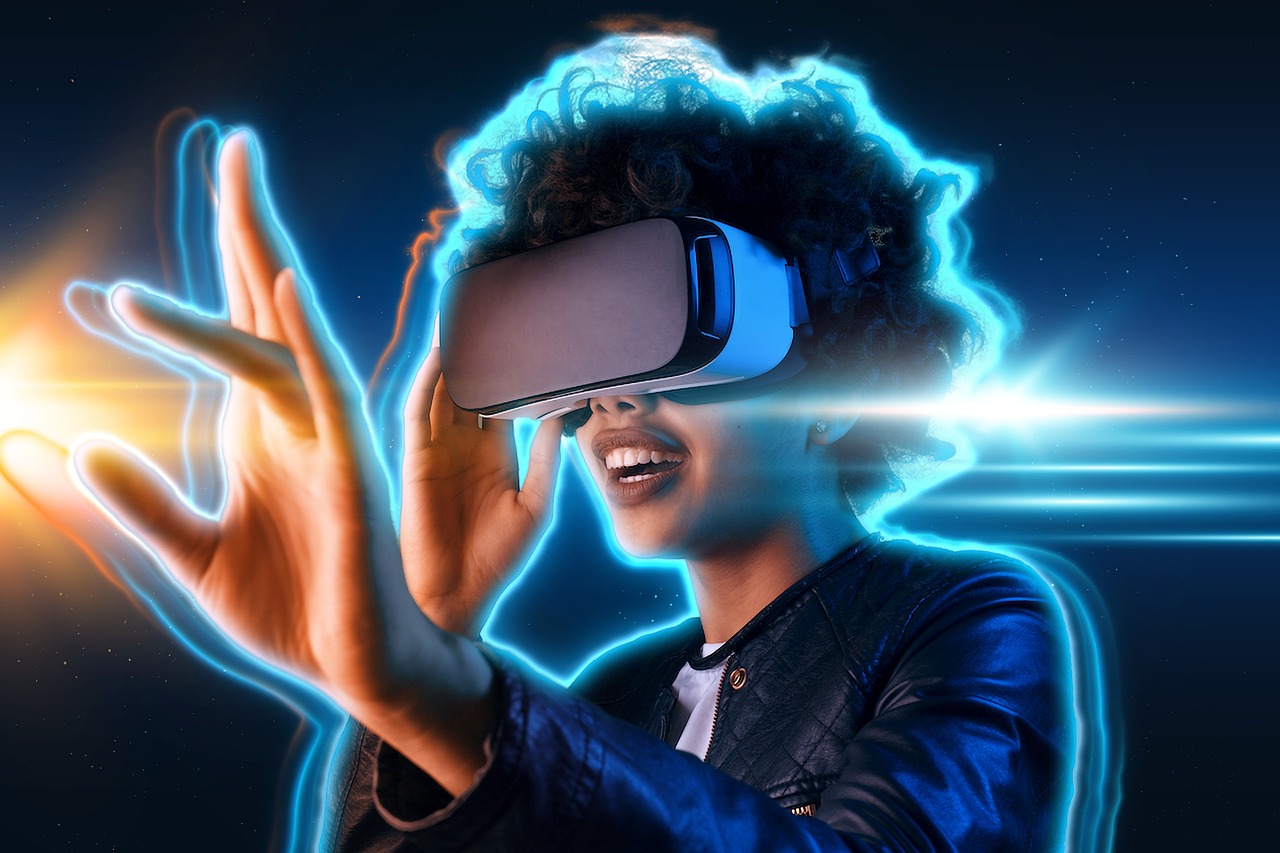
Therapeutic Applications
Virtual reality (VR) has emerged as a groundbreaking tool in the realm of therapy, providing innovative solutions for mental health treatment and rehabilitation. Imagine stepping into a world where your fears can be faced head-on in a safe environment, or where chronic pain can be managed through immersive experiences that distract and soothe. This is the power of VR in therapeutic applications. By creating controlled and customizable environments, therapists can help patients confront their challenges in ways that were previously unimaginable.
One of the most significant advancements has been in the treatment of conditions such as Post-Traumatic Stress Disorder (PTSD), anxiety disorders, and various phobias. For instance, exposure therapy, which involves gradual exposure to a feared object or context, can be conducted in a virtual setting. This allows patients to experience their fears in a controlled manner, easing them into confronting real-life situations. According to studies, patients undergoing VR exposure therapy have reported a significant reduction in symptoms, highlighting its effectiveness.
Furthermore, VR is also being utilized in pain management. Patients dealing with chronic pain can be immersed in calming environments—like serene beaches or tranquil forests—helping to divert their attention from pain. This technique not only reduces the perception of pain but also promotes relaxation and emotional well-being. Research has shown that such immersive experiences can lead to a decrease in pain levels and improve overall quality of life.
In addition to mental health, VR is making waves in physical rehabilitation. Patients recovering from injuries can engage in virtual exercises tailored to their specific needs, making the rehabilitation process not only more effective but also more enjoyable. For example, a patient recovering from a stroke might use VR to practice hand movements in a virtual environment, enhancing their motor skills through engaging gameplay mechanics. This method fosters motivation and encourages patients to participate actively in their recovery.
Overall, the therapeutic applications of virtual reality are vast and varied. The technology is continually evolving, with researchers and therapists constantly discovering new ways to harness its potential. As we move forward, the integration of VR into therapeutic practices promises to redefine how we approach mental health and physical rehabilitation, making healing a more interactive and engaging process.
- What is virtual reality therapy?
Virtual reality therapy involves using VR technology to create immersive environments for therapeutic purposes, helping patients confront fears, manage pain, and enhance rehabilitation. - How effective is VR in treating PTSD?
Studies have shown that VR exposure therapy can significantly reduce PTSD symptoms by allowing patients to confront their traumas in a controlled virtual setting. - Can VR help with chronic pain management?
Yes, VR can distract patients from pain by immersing them in calming virtual environments, leading to reduced pain perception and improved emotional well-being. - Is VR therapy safe?
When conducted by trained professionals, VR therapy is considered safe. However, it may not be suitable for everyone, and a thorough assessment is essential before starting treatment.

Medical Training and Education
Virtual reality (VR) is reshaping the landscape of medical training and education in remarkable ways. Imagine a future where medical students can practice complex surgical procedures without the risk of harming a real patient. This is no longer a distant dream; it’s happening right now! VR technology provides a safe, controlled environment where budding doctors can hone their skills through realistic simulations. By immersing themselves in lifelike scenarios, students gain invaluable experience and confidence that traditional training methods simply cannot match.
One of the most significant advantages of using VR in medical training is the ability to replicate rare or complex cases that students might not encounter during their clinical rotations. For instance, a student could experience a virtual simulation of a rare surgical procedure, allowing them to understand the intricacies involved without the pressure of a real-life situation. This not only enhances their learning but also prepares them for unexpected challenges in their future careers.
Moreover, VR can cater to various learning styles, making it a versatile tool in medical education. Some students grasp concepts better through visual aids, while others prefer hands-on experience. VR combines both, allowing learners to visualize anatomy in 3D and practice procedures in a tactile environment. This multi-faceted approach can lead to better retention of information and a deeper understanding of complex medical concepts.
Additionally, VR training modules can be easily updated to reflect the latest advancements in medical science. This means that students are always learning the most current techniques and practices, keeping them at the forefront of their field. For example, a new surgical technique can be added to a VR training program almost immediately, ensuring that learners have access to cutting-edge information.
However, it’s essential to acknowledge that implementing VR in medical education is not without its challenges. High costs of VR equipment and software can be a barrier for many institutions, particularly those with limited budgets. Furthermore, instructors need proper training to effectively integrate VR into their teaching methods. Yet, as technology continues to evolve and become more accessible, these hurdles are gradually being overcome.
To illustrate the effectiveness of VR in medical training, consider the following table that summarizes key benefits:
| Benefit | Description |
|---|---|
| Safe Learning Environment | Students can practice without the risk of harming patients. |
| Exposure to Rare Cases | VR allows students to experience unusual medical scenarios. |
| Enhanced Skill Retention | Interactive simulations improve memory and understanding. |
| Up-to-Date Training | Training modules can be easily updated with the latest techniques. |
| Adaptable Learning Styles | Accommodates various learning preferences through immersive experiences. |
In conclusion, the integration of virtual reality into medical training and education is not just a trend; it is a transformative approach that promises to improve the quality of healthcare education. As VR technology continues to advance, we can expect to see even more innovative applications that will further enhance the training of medical professionals. The future of medical education is here, and it’s more exciting than ever!
- How does VR enhance medical training? VR provides a realistic and immersive environment for practicing procedures, which helps students build confidence and competence.
- Is VR training cost-effective? While initial costs can be high, the long-term benefits of improved training outcomes can outweigh these expenses.
- What types of procedures can be practiced using VR? VR can simulate a wide range of medical procedures, from surgical operations to patient interactions.
- Are there any limitations to VR in medical training? Yes, challenges include high costs, the need for instructor training, and ensuring the technology is accessible to all students.
Frequently Asked Questions
-
What is virtual reality technology?
Virtual reality (VR) technology creates a simulated environment that can be similar to or completely different from the real world. By using special hardware like VR headsets and software, users can immerse themselves in a 3D space, enabling experiences that feel incredibly real. It's like stepping into a video game or a movie, where you can look around and interact with the environment!
-
How does virtual reality enhance gaming experiences?
VR takes gaming to a whole new level by allowing players to engage in immersive worlds where they can look around, move, and interact as if they were actually inside the game. This means players can experience a sense of presence that traditional gaming just can't match. Imagine being in the middle of a thrilling battle or exploring a fantasy realm—it's all possible with VR!
-
Can virtual reality be used for educational purposes?
Absolutely! VR is transforming education by providing interactive learning experiences. Students can explore historical sites, conduct scientific experiments, or even practice complex skills in a safe virtual environment. It's like having a field trip without leaving the classroom—engaging and educational!
-
What are some therapeutic applications of virtual reality?
VR is making waves in therapy, especially for conditions like PTSD, anxiety, and phobias. By immersing patients in controlled environments, therapists can help them confront and manage their fears in a safe way. It's a powerful tool that offers new hope for many individuals seeking treatment.
-
How is virtual reality used in medical training?
In the medical field, VR allows practitioners to simulate surgeries and patient interactions, giving them hands-on experience without the risks associated with real-life procedures. It's like a flight simulator for doctors—practicing skills in a risk-free environment before treating actual patients!
-
What are the challenges of developing VR games?
Creating VR games comes with its own set of challenges, such as ensuring comfort to prevent motion sickness, designing intuitive controls, and optimizing graphics for immersive experiences. Developers must think outside the box to create engaging content that fully utilizes the potential of VR technology.
-
What future trends can we expect in virtual reality?
The future of VR looks promising! We can anticipate advancements in hardware, such as lighter headsets and improved graphics, as well as more interactive gameplay designs. As technology evolves, the possibilities for VR applications in gaming, education, and healthcare will continue to expand, making it an exciting field to watch.

